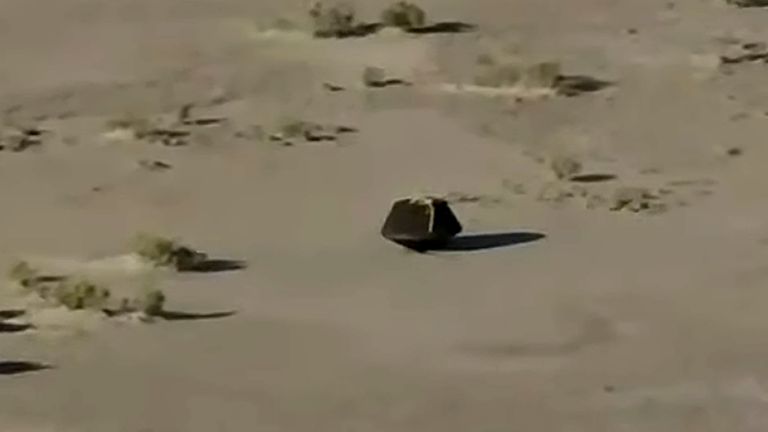Sir Brian May has mentioned he’s “immensely proud” to be a part of the workforce who efficiently collected NASA’s first asteroid samples from deep house.
A capsule containing round 250g of rocks and dirt collected from asteroid Bennu touched down within the Utah desert close to Salt Lake City on Sunday.
Earlier within the day, the Osiris-Rex spacecraft launched the pattern capsule round 63,000 miles out throughout a flyby of Earth.
Queen guitarist and astrophysicist Sir Brian aided the mission by serving to to establish the place Osiris-Rex may seize a pattern from the asteroid.
Read extra:
NASA probe returns with rock samples from asteroid – as it happened
Capsule contained around 250g of rocks and dust collected from asteroid
In a message of help proven on NASA TV, Sir Brian mentioned: “Hello Nasa people, house followers, asteroid aficionados, that is Brian May of Queen but additionally I’m immensely proud to be a workforce member of Osiris-Rex.
“I am unable to be with you in the present day, I want I may, I’m rehearsing for a Queen tour, however my coronary heart is there with you as this valuable pattern is recovered.
“Happy sample return day and congratulations to all who worked so incredibly hard on this mission.”
Read extra:
Closest-ever photo of massive asteroid Bennu
NASA taking ‘concrete action’ to explore UFOs
The rocker significantly praised his “dear friend” Dante Lauretta, who he created the ebook Bennu 3-D: Anatomy of an Asteroid with, which is a 3D atlas of the asteroid.
The pattern is the US house company’s first mission to gather a pattern from an asteroid and the primary by any company since 2020.
1 / 4 of the pattern will probably be given to a gaggle of greater than 200 individuals from 38 globally distributed establishments, together with a workforce of scientists from the University of Manchester and the Natural History Museum.
Asteroid Bennu is a 4.5-billion-year-old remnant of our early photo voltaic system and scientists imagine it will probably assist make clear how planets fashioned and developed.
Experts say the carbon-rich, near-Earth asteroid serves as a time capsule from the earliest historical past of the photo voltaic system.
Content Source: news.sky.com

